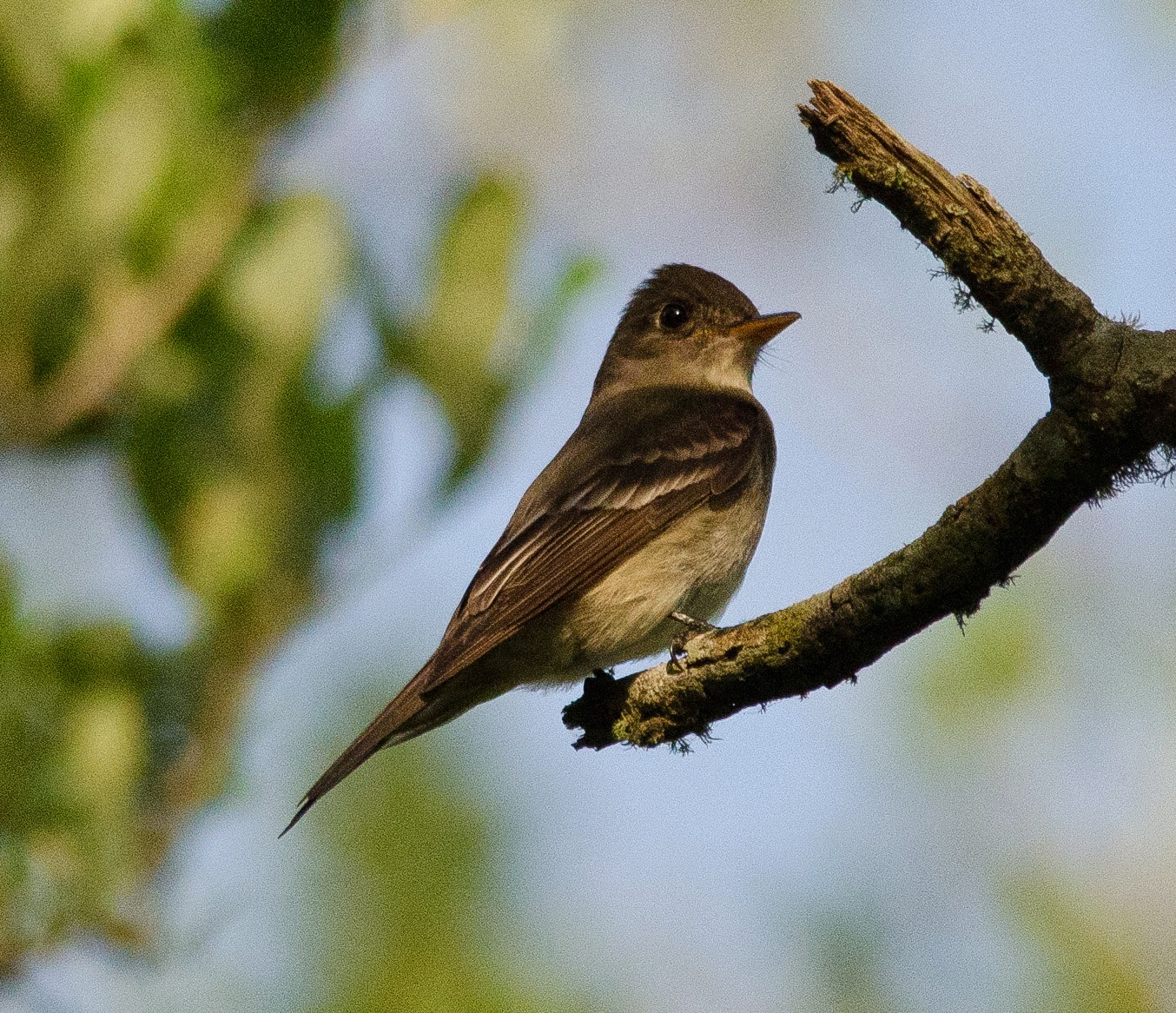Day 2, and I was up early as today was the day I had planned to spend in High Island, a small town about 19 miles south of Winnie. It is called High Island as it is where a salt dome is located and it sits about 30 feet higher than the surrounding flat grasslands and marshes. Due to this slightly elevated height, it is covered with many very tall trees which is one of the first places that many of the migrating smaller birds such as warblers will immediately touch down after their long flight over the Gulf of Mexico. They are many times exhausted and are in search of food and water. The Houston Audubon Society monitors and maintains about 4 stands of trees in this small town and during peak migration they offer 3 daily birding trips lead by well qualified guides. I wanted to take advantage of these 3 trips so I could become more familiar with the area and maybe find birds that I could easily overlook. The weather for this day started out a little bit worse than Sunday; still a strong southerly wind, overcast and rain showers in the morning, it cleared up later in the day with some sunshine.
The first tour was centered around Boy Scout Woods in High Island and one of the birds that I discovered early on, was another Common Nighthawk. After seeing the one in flight the day before, this day I was blessed to find one perched on a wire allowing lots of views and photos for anyone that was there. As it turns out, I ended up finding 4 more of these birds sitting still; 3 on the ground and 1 on a fence post all in different locations during my stay.
Common Nighthawk
Starting with birding in the woods, I quickly discovered the the Gray Catbird was quite common and if you could locate the mulberry trees, then you would most likely find one of these birds feasting on those berries.
Gray Catbird
At one spot, I stumbled upon a Yellow-billed Cuckoo feasting on tent caterpillars. This have always been a bit of a shy and elusive bird for me as they are quick to dart into thick vegetation when they know you are near. This one was quite content and allowed me some great photos of this bird; even with a worm in its beak.
Yellow-billed Cuckoo
The rest of the birds that I had the pleasure of seeing were the smaller passerines or song birds. Some were difficult to photograph as they were most often in the deep shade of the trees, or a bit too far for good focusing. They include a male American Redstart, a Black-throated Green Warbler (new life bird), Common Yellowthroat, Eastern Wood Pewee (new life bird), Indigo Bunting female, Painted Bunting, Rose-breasted Grosbeak (new life bird), Scarlet Tanager (new life bird), and a Tennessee Warbler (another new life bird).
American Redstart
Black-throated Green Warbler
Common Yellowthroat
Eastern Wood Pewee
Indigo Bunting - Female
Painted Bunting - Male
Rose-breasted Grosbeak - Male
Scarlet Tanager - Male
Tennessee Warbler
This day of birding has to be split up into 2 different posts due to the sheer numbers of birds. The next part will focus on water birds as one of our trips involved a coastal trip and some great birds near water and also my visit to the Smith Oaks Rookery on High Island later in the afternoon. I ended up with 14 new species of birds for this day, so it was really quite awesome!













Love the photo trek! It sounds like a wonderful place to bird.
ReplyDeleteYou're the Crush-o-mat 5000 Gordon, great photos!
ReplyDeleteThat Yellow-billed Cuckoo is super fantastic. As you mention, we don't get the exhausted, not-a-care-in-the-world birds in AZ like on the TX coast. Way to make the mot of that wonderful opportunity!
Looking forward to more.